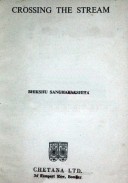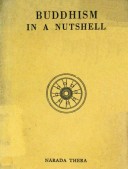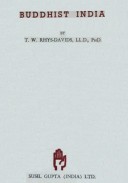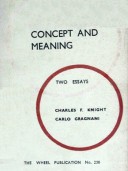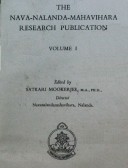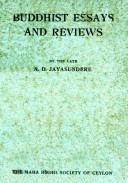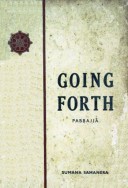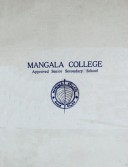Tìm Sách
Sách tiếng Anh-English >> The Oxford Companion To American Literature
Thông tin tra cứu
- Tên sách : The Oxford Companion To American Literature
- Tác giả : James D. Hart
- Dịch giả :
- Ngôn ngữ : Anh
- Số trang : 991
- Nhà xuất bản : Oxford University Press
- Năm xuất bản : 1965
- Phân loại : Sách tiếng Anh-English
- MCB : 12100000011641
- OPAC :
- Tóm tắt :
PREFACE TO THE FOURTH EDITION
Designed to serve as a useful companion for students and general readers, this volume provides ready references, first of all, to the authors and writings, past and present, popular and polite, that are included in the area of American literature. In addition, the references extend to the written word in America outside conventional literary criteria, but relevant to them. The volume treats major nonliterary aspects of the American mind and the American scene as these are reflected in and influenced by American literature. The scope of the work also embraces far more than belles-lettres, yet while it attempts to be as comprehensive as might be desirable for a reader concerned with the literature of this land, it excludes commonplace forms of writing such as cookbooks and comic books. It is a companion to reading rather than to literature alone, but literature lies at its center.
In alphabetic arrangement, the work includes short biographies and brief bibliographies of American authors, with information regarding their style and subjects. Next most common as a category are the more than one thousand summaries of important American novels, stories, essays, poems (with verse forms noted), plays, biographies and autobiographies, tracts, narratives, and histories, all of them long enough to provide a good sense of the original works, and many of them containing succinct but salient quotations. Other subjects that receive substantial treatment include definitions and historical outlines of literary schools and movements, literary awards (in some instances with lists of winners and their works), literary societies, scholarly organizations, magazines, newspapers, anthologies, cooperative publications, book collectors, printers, colleges and universities and their alumni in the world of letters, and a wide variety of other matters related to writing in America. Literary terms that are sufficiently defined in dictionaries are not cited unless they have a distinctive history in the United States or warrant definition by American examples. Thus there are no entries on the conventional terms of prosody, but existentialism, free verse, impressionism, polyphonic prose, and stream- of-consciousness are all treated, and there are full articles on such subjects as the ballad, local color, romanticism, and the tall tale.
As indicated even by a glance at the column of Literary History in the Chronological Index that concludes this book, much of the writing that is discussed in these pages may not be distinguished by beauty of style, but it is all important for a comprehensive review of expression in America. The written word does not exist in a vacuum, and the author of this book has therefore constantly kept in mind the idea that the fullest understanding of major works of literature, let alone lesser pieces of writing, depends upon an informed knowledge of the social and cultural atmosphere of their place and time. This view has led to the inclusion of entries on social, economic, aesthetic, scientific, military, political, and religious figures and events that have affected the actions and thoughts, and hence the writings, in the lands now forming the United States, from the time of their discovery to the present day.
Accordingly there are included in this work biographies of persons who are not authors but who have been important in the nation’s social history and culture, articles on religious sects. Indian tribes, wars, laws and documents, educational institutions, important cities and regions, popular slogans, and other subjects that may seem outside the purview of literature but whose relationships with it are genuine and significant. Entries will be found on subjects that range alphabetically from Abolitionist to the Zuni Indians, the former entry, for example, including references to authors as various as Samuel Sewall, Franklin, Crèvecocur, Richard Hildreth, Mrs. Stowe, Hinton Helper, Lowell, and Whittier, and the latter including a reference to an author as current as Edmund Wilson.
Just as American materials that lie on the periphery of literature are treated, so foreign materials that are relevant to this country’s writings are also represented. The explorers and colonial historians of neighboring lands are dealt with, as is the major literature of Canada. Foreign authors are also given attention when they have written important books about the United States, or when they bear some other relation of consequence to American literature. One will find entries on William Cobbett, Charles Dickens, Frank Harris, and Rudyard Kipling, among many others, but the entries tell only of their American associations; and, of their works, only the ones that deal with America, such as Dickens’s Martin Chuzzlewit and American Notes or Kipling’s Captains Courageous, are summarized in entries of their own. The same standards have been applied in selections for entries on foreign statesmen, scholars, travelers, and others who have figured directly or indirectly in the shaping of American culture as it bears upon literature.
Every precaution, within the limits of time and energy at the disposal of one man, has been taken to make the book comprehensive, balanced, and accurate. The very fact that both the plan and the writing are the work of one man has made for a carefully considered proportion in the entries, so that authors past and present, literary movements of earlier times and of this moment, are all assessed in relation to one another to achieve a proper balance in which antiquarian ism will not overwhelm appreciation of the present and contemporaneity will not seem so attractive as to depreciate previous eras.
The length of an article should, nevertheless, not be considered as precisely marking the relative importance of its subject. Many considerations have upset the use of exact standards of length, although an attempt has constantly been made to allot space according to a judgment of what is significant in American literary and social history as considered both by the writer and by scholarship on the whole field here treated. However, even among authors, such considerations must be recognized as the duration of their careers, the scholarly controversies about them, the differences between those who were recluses and those who entered actively into the life of their times, and the distinctions between those who wrote many books on different subjects and in varying forms, and those whose books were all cut on the same pattern. This is true also of the descriptions and plot summaries, which, irrespective of the literary qualities of the books, may be lengthened or shortened according to the diffusion or simplicity of the subject matter. The same forces operate in the general articles. Thus, although Boston’s population is less than one-fifth of Chicago’s, its literary history is far longer and more complex and requires a more detailed entry.
Nearly twenty-five years have passed since the first edition of this book was printed. During that time new authors and new subjects of other kinds have come to prominence, and, indeed, new attitudes toward the study of literature have developed. These changes have affected the book so that it is greatly altered from the first edition of 1941. But it is certainly not an entirely new book, for happily it appears to have stood the test of time well. Where it has changed, it has not changed all at once, for minor alterations and additions have been made quietly in various printings while some significant changes have been made in each of the three preceding editions. For example, in the third edition alone 80 new entries were added and 480 old entries were substantially rewritten.
This newly set fourth edition has given freedom for a complete and thoroughgoing revision, without any need to follow the pagination of the past or to be constrained by that which was already in type. All but 82 pages of the third edition have undergone some changes; that is, fewer than 10 per cent of the pages remain exactly as they last were. The alterations are so many and of such different kinds that only some indication of them can be conveniently suggested.
This fourth edition contains entries on 223 authors not previously included. It also contains 62 new and full summaries in separate entries. Of the authors previously treated, 343 have had extensive changes made in the entries devoted to them, and many of these entries have been completely rewritten. Comparable figures might be cited for other but less common categories of entries, e.g. literary groups, magazines, literary associations of various cities and regions, and literary awards.
Despite all the additions, fortunately it has been possible to keep the work within a handy compass because deletions or abbreviations have been made of background subjects that do not bear closely on literature. Peripheral subjects have, nevertheless, been retained, usually with their literary associations amplified or clarified, in keeping with the view that the understanding of works of literature is strengthened by an informed knowledge of the forces that surrounded their creation and reception. So, for example, the book continues to include certain categories that are only tangentially literary, such as the entries on all Pulitzer Prize winners, even though some of these persons are not literary figures (e.g. General Pershing), on the assumption that they represent a well-known group of American writers likely to be of interest to users of this work.
From the time of writing the first edition, on through all later printings, and to the period of preparing this edition, I have profited enormously from the helpful advice and valuable suggestions of friends, students, and other users of the work. Chief among these have been Curtis Carroll Davil, Professor John H. Edwards, Alfred Kazin, the late Professor Randall V. Mills, Margaret Nicholson, Professor Mark Schorer, James E. Sisson, Professor Henry Nash Smith, Professor George R. Stewart, and the late Professor George F. Whither, in the Preface to the first edition most of them are thanked with a more specific acknowledgment of their attributions. However, at the end of the five years that it took to create the first edition while carrying on a full teaching schedule, I wrote some words that I would like to repeat now: ‘Mr. Frederic R. Gunsky, my typist and secretary during most of this time, has come to know the work as intimately as I, typing and retyping the various articles. He has gone far beyond the limits of the work required of him, from research and the compilation of materials to excellent suggestions concerning the general plan.’ Similarly I wish to note that during the two years that the present revision was in progress Gordon o. Taylor assisted me by providing much help on the basic research; and this he did with admirable accuracy, ingenuity, and speed. When the work was first begun in 1936, my sister, Ellen H. Bransten, commenced her invaluable assistance to me by providing the basic material on all painters, sculptors, and architects. I am happy to say that for the present edition I have again received help from within the family. This time my daughter, Carol Hart Field, has aided me substantially by preparing the information used for some of the new summaries of books. Finally and not repetitively, even though mentioning two names again, I am indebted to my wife Ruth, to my brother-in-law and sister, Mr. and Mrs. Joseph M. Brans ten, and to my daughter and son, Carol and Peter, for their constant interest in and valuable suggestions for a work that seems over the years to have grown from a book into a part of, almost a way of, life.
Berkeley, California J.D.H.
June 1965
 Facebook
Facebook
 Google
Google
 Google+
Google+


